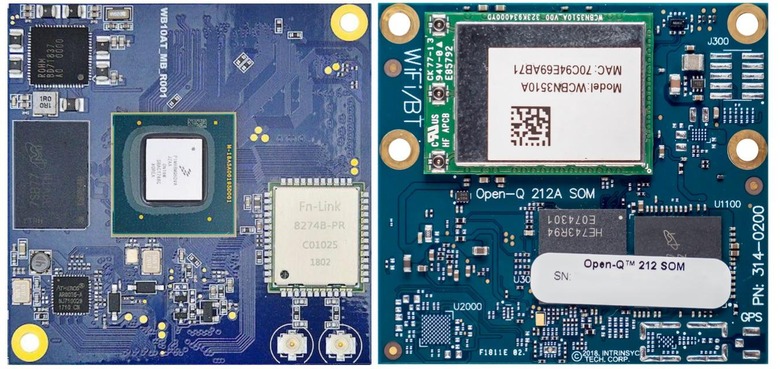Google's Big Android Things Plan To Dominate The IoT Is Here
Google's Android Things has graduated to v1.0, with final software and four new hardware designs announced for those wanting to fast-track Internet of Things devices like smart speakers and connected displays. Announced back in December 2016, Android Things was Google's attempt to make developing IoT products more straightforward, wrapping up Android, Brillo, and some turnkey hardware from partners into an easily-deployable package.
Since then, Google's Dave Smith, developer advocate for the IoT, says, over the developer preview SDK has been downloaded more than 100,000 times. On the eve of Google I/O 2018 kicking off, the company is releasing Android Things 1.0 with the production software.
To go with that finalized code there are also four new System-on-Modules (SoMs) that are being officially supported. These are based on the NXP i.MX8M, Qualcomm SDA212, Qualcomm SDA624, and MediaTek MT8516 hardware platforms. Each will have a guaranteed three years of support, including OTA updates, stability fixes, and security patches from Google itself.
Like the Raspberry Pi 3 Model B and NXP i.MX7D before them – which will remain supported; Google is retiring support for the NXP i.MX6UL – they're designed to give developers a starting point for getting a product made. Over the next few months, Google says, there'll be development hardware and reference designs for the four new SoMs. Each will include different connectivity, processing speeds, memory and storage, and other abilities.

With them, Google says, developers will be able to design new connected hardware that ties directly into its cloud services. Examples of what that might look like specifically include Lenovo's Smart Displays, which will take on Amazon's Echo Show with the Google Assistant powering a touchscreen interface, while LG is releasing Assistant-powered smart speakers that also use Android Things. It's not just about big names, however.
Indeed Google is hoping to sweep up when it comes to smaller projects, individuals, and startups wanting to take a bite out of the IoT. It needn't be consumer-focused devices, either. One such project using Android Things is Mirego, which uses the platform to power public photo displays showing images from a network of photo booths in Montreal.
A new Android Things partner program will offer promising teams support and guidance on getting going, with Google opening the application process today. As part of that three month scheme, there'll be insight into the new Peripheral I/O interface that is arriving with Android Things 1.0, and which will open the door to things like GPIO resistors and I2C bus speed.
